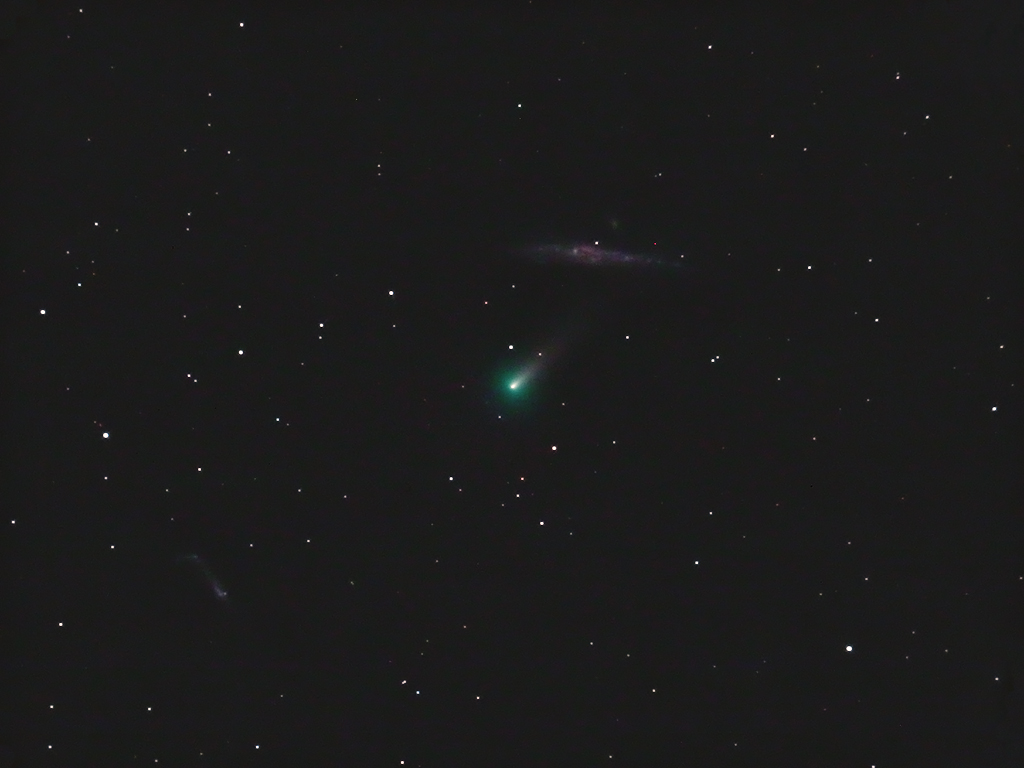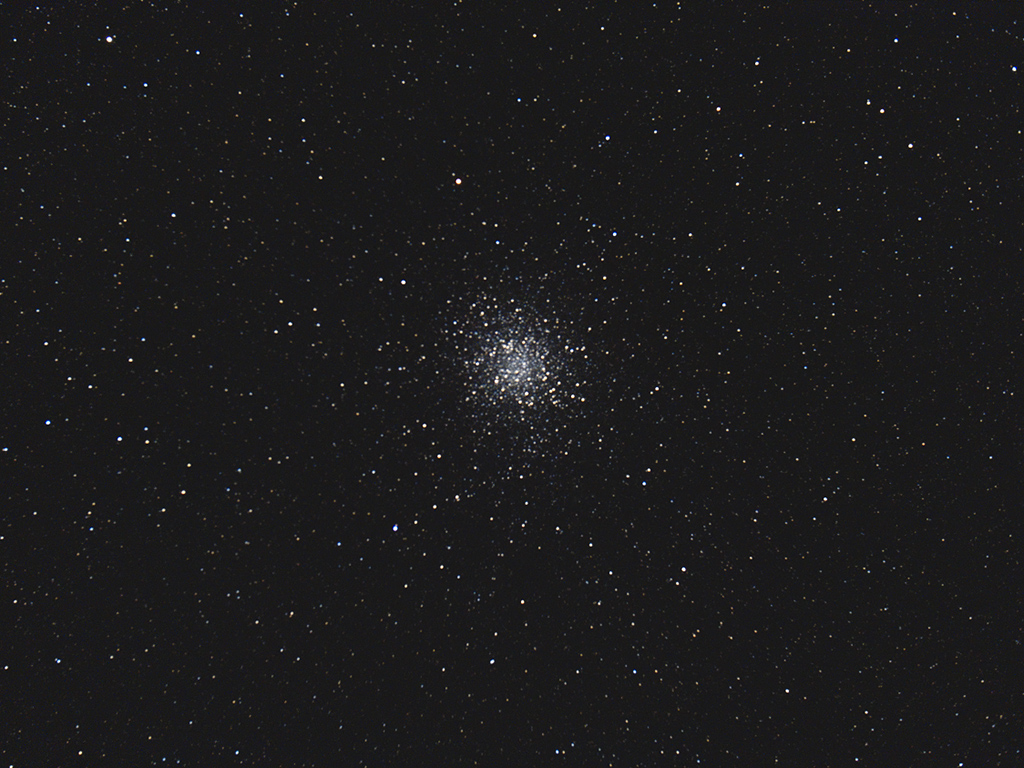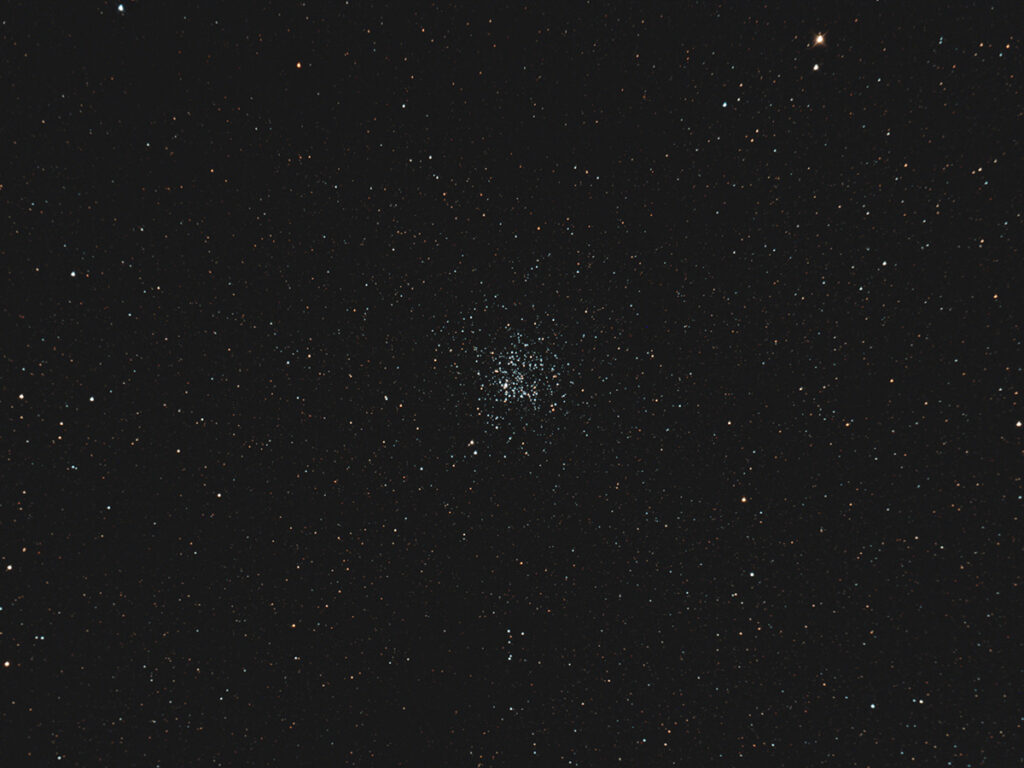
Telescope: Light Switch 8 @ f/6.2 (Optec 0.62x focal reducer), altaz mode
Camera: Full Spectrum Modified Canon 600D, interval timer
Filter: GSO IR Blocking Filter
Guide scope: None
Exposure: 39x10sec, ISO 1600, saved as RAW
Darks: Internal (Long Exposure Noise Reduction On)
Flats: 32×1/10sec, Tee shirt flats taken at dusk
Average Light Pollution: Red zone, Bortle 8, fair transparency
Lensed Sky Quality Meter: 18.4
Stacking: Mean with a 1-sigma clip.
White Balance: Nebulosity Automatic
Software: Deep Sky Stacker, Nebulosity, Photoshop
M30 is a relatively small, bright, condensed globular that makes a fine target for small telescopes. In larger scopes it resolves nicely into a tiny patch of stardust.
M30 is currently low in the southwest after sunset.



Recent Comments